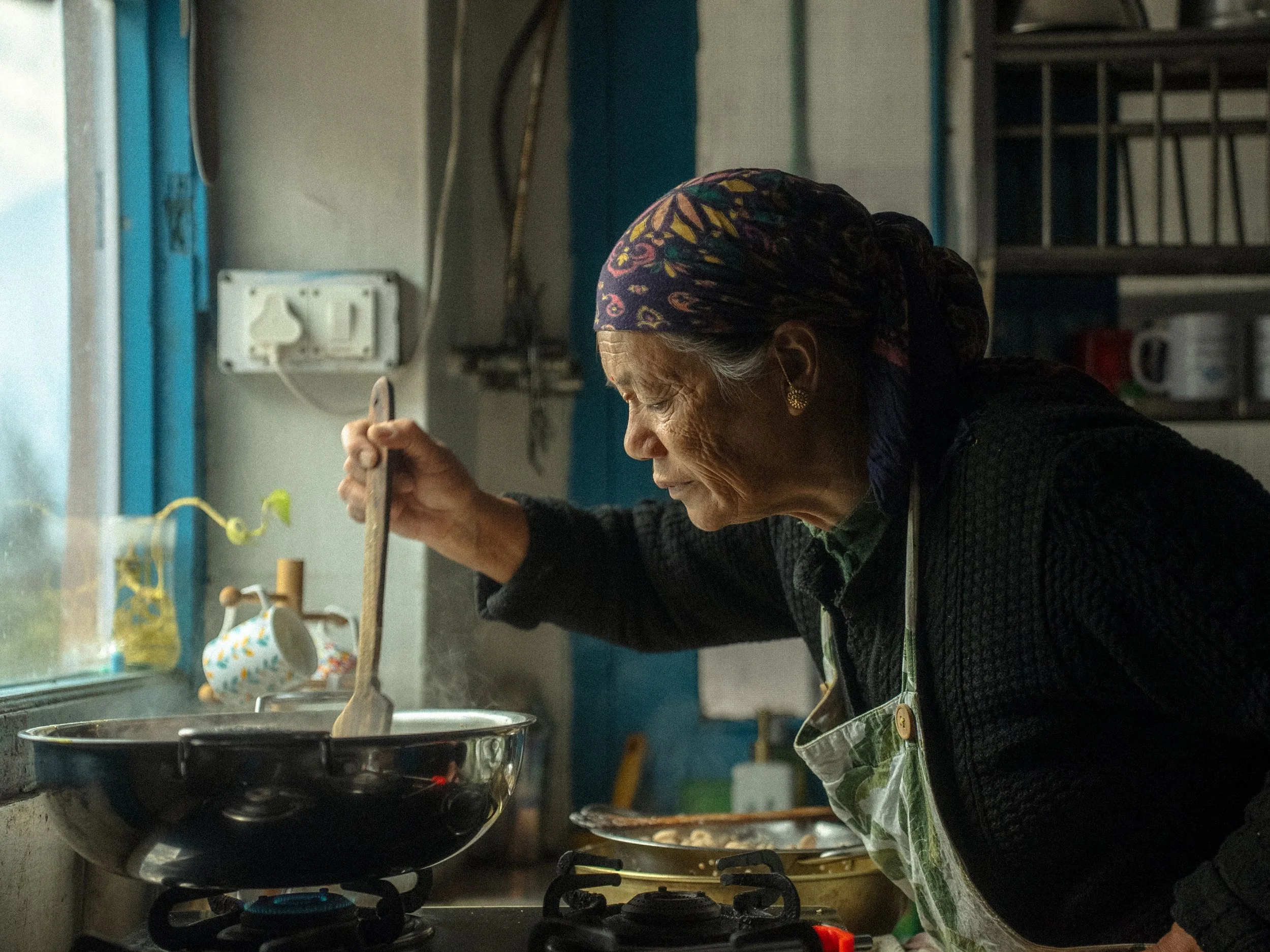Reclaiming Farey on Karva Chauth

"The flavour of these dumplings always took me back to Karva Chauth celebrations at home. As much as I loved it, they were always a guilty indulgence — for I always saw the dish as symbol of patriarchy." Shriyanshi Shukla examines the cultural context of her beloved fried dumplings, farey.
“This is nothing but fanci-ed up farey.” My mother and I are out, eating at street vendor’s in Lucknow. The momos there remind her of that North Indian dish, typically eaten on Karva Chauth.
Farey is a dish rooted in multiple cultural and familial contexts, and it brings back big memories for me: that incredible aroma, its lightness on the palate, a flavour that is the definition of ‘home’. But it is also a dish I considered synonymous with that celebration of patriarchy — Karva Chauth. Like every North Indian family, this festival was a grand affair at home. I was never an active part of the celebration, having resisted the festival and its ethos since I was a child: the tradition (on the paternal side of my family), is that women must fast all day, while preparing a lavish meal on an empty stomach, to please the gods and their husbands. This meal was identical every year — kadhi pakodas, dahi vada, chapati, rice, and the king of the platter, farey. Simply put, farey is a fried dumpling, rich in protein, with urad and chana dal as primary ingredients. It is served best as a breakfast dish, side dish, or even an evening snack.
Over the years, I saw my mother driving soft bargains, in her own ways: She gave up the idea of cooking a huge spread while fasting, and instead prepared the dough, made the stuffing, and boiled farey, a day before. “We can fry and eat it tomorrow,” she would say, adding, “The gods are like us — they can eat day-old food.” These small acts were her gentle way of bargaining with regressive traditions that go back generations.
Years later, as I shared farey that my mother made with a feminist reading group in my literature class, I couldn’t help but contemplate the social context in which this dish was rooted, in my home. “Why have I never seen the men of my home make farey?” I wondered. They did enter the kitchen every now and then, but, this engagement with the culinary space was more about leisure than responsibility.
Whenever I visited home and asked for farey, my mother would resist at first, but ultimately give in. Was her resistance rooted in the dish’s patriarchal context? Her answer was inconclusive: “I never thought about it that much. I just don’t want to spend so much time preparing a dish that you will polish off in minutes.” Despite this, she would often cook farey, in spite of its arduous cooking process, to please the gods and her family, even my friends when they visited.
My perception of farey change over the years. As much as I loved its flavours, it was always a guilty indulgence — for I always saw the dish as symbol of patriarchy. The flavour of these dumplings always took me back to Karva Chauth celebrations at home.
It took a lot of unlearning to dissociate this dish from the memory of regressive traditions. I have learned that culinary indulgence is as much about art, as it is about cultural context. Therefore, I have started associating farey with newer memories: sharing it with friends in my feminist reading class, or my desperately failed attempts at cooking the dish (which have only doubled the respect for my mother’s art). I now try to eat (and cook) farey without guilt, re-building happiness, peace and joy into something patriarchy had a fast hold on.
Here I am immortalising my mother’s recipe, with a few adjustments (she uses wheat flour instead of rice flour, and adds onion on non-fasting days).
RECIPE FOR FAREY
Ingredients
For Stuffing
½ cup each soaked urad and chana daal
1 inch Ginger
5-6 cloves garlic
2 green chillies
1 tsp cumin
¼ tsp hing
½ tsp cumin powder:
For Frying
3-4 tbsp oil
½ tsp cumin
1 onion, sliced
½ tsp rai or black mustard seeds
Method
Mix urad and chana daal and soak for 3-4 hours.
Drain the water, add the rest of the ingredients for the stuffing. Grind to form a coarse mixture.
Knead two cups atta or wheat flour with water. Allow to rest for half an hour.
Make small balls of the dough, then roll out to form a thick disc.
Now, fill in the stuffing. Fold the dough to make a semi-circle sandwich.
Steam the dumplings for 20 minutes.
Allow to cool.
The farey is ready to be served now. However, it can also be deep-fried.
To fry, heat oil in a wok, add in cumin and mustard seeds.
When it splutters, add onion slices.
When the onion turns golden brown, slice the farey into small longitudinal sections and fry.
You can serve this with a chutney or any dip of your choice.
Shriyanshi Shukla is a communication professional who gets her serotonin from food and aims to mix her love for food with her penchant for writing in the long term.
ALSO ON GOYA










